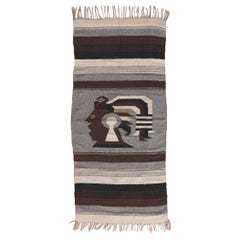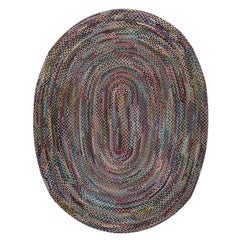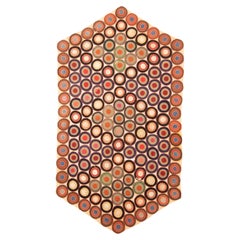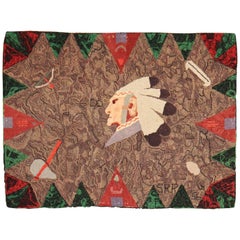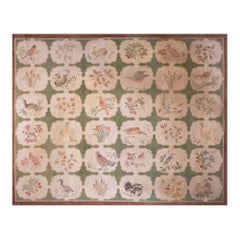Adirondack North and South American Rugs
Evoking rusticity and relaxation through simple and elegant designs, vintage Adirondack furniture originated in the Adirondack Mountains of northeastern New York. The most famous piece is the Adirondack chair, which dates to 1903.
With its ample armrests and sturdy but comfortable slanted seat, the reclined Adirondack chair was designed by Thomas Lee for his own country home. The postwar golden age of modern patio and garden furniture production — led by the likes of Brown Jordan, Knoll, Salterini and Woodard — was decades away at the time, and there were few pieces of furniture specifically created for outdoor use.
Lee, a Massachusetts-born Harvard graduate raised in a wealthy family, was no furniture designer. He merely needed a durable, rugged chair for afternoons in the sun while he was vacationing on Lake Champlain in Westport, New York, in the summer. The amateur woodworker used just one wooden plank cut into 11 segments that were jointed together for his now-legendary seat, which is said to have been made of hemlock, hickory or basswood.
The story of the Adirondack chair continues with Lee’s friend, carpenter Harry Bunnell, covertly patenting the chair and going on to produce it as the Westport Plank chair for a growing audience over the next two decades. Over a century later, the Adirondack chair has gone through several design evolutions while maintaining its popularity and basic form with slats of wood such as pine offering comfort both indoors and out.
The widespread demand for rustic Adirondack outdoor furniture was bolstered by the turn-of-the-century establishment of rural escapes to treat diseases such as tuberculosis. The low-slung Adirondack chair became common in these places of convalescence, allowing patients to recline and breathe in the country air. It also complemented the camp-style architecture that was prevalent in the Adirondacks for recreation as well as restoration, where rugged furniture with exposed wood and minimal carving filled interiors and wide porches.
Today, Adirondack chairs are made in a range of materials and can be found around the world, from ski resorts to lakeside piers, their durability and classic form making them an enduring favorite for spending time in nature.
Find vintage Adirondack chairs, benches, lounge chairs, decorative objects, folk art and other furniture on 1stDibs.
Late 20th Century Mexican Adirondack North and South American Rugs
Wool
Late 20th Century Mexican Adirondack North and South American Rugs
Wool
1920s American Vintage Adirondack North and South American Rugs
Fabric, Wool
Mid-20th Century American Adirondack North and South American Rugs
Wool
1930s American Vintage Adirondack North and South American Rugs
Wool, Fabric
Mid-20th Century American Adirondack North and South American Rugs
Wool
Late 20th Century Mexican Adirondack North and South American Rugs
Wool
Early 20th Century American Adirondack North and South American Rugs
Wool
Mid-20th Century American Adirondack North and South American Rugs
Fabric, Wool, Jute
20th Century Adirondack North and South American Rugs
Wool
1950s American Vintage Adirondack North and South American Rugs
Wool
Mid-20th Century American Adirondack North and South American Rugs
Wool, Cotton, Yarn
Early 1900s American Antique Adirondack North and South American Rugs
Wool
20th Century American Adirondack North and South American Rugs
Wool
Mid-20th Century American Adirondack North and South American Rugs
Wool, Yarn
Late 20th Century Mexican Adirondack North and South American Rugs
Wool, Cotton
Mid-20th Century American Adirondack North and South American Rugs
Wool, Yarn
Mid-20th Century American Adirondack North and South American Rugs
Wool
1960s American Vintage Adirondack North and South American Rugs
Wool
1930s Canadian Vintage Adirondack North and South American Rugs
Wool
20th Century American Adirondack North and South American Rugs
Wool
1930s American Vintage Adirondack North and South American Rugs
Wool
20th Century American Adirondack North and South American Rugs
Wool
Early 20th Century American Adirondack North and South American Rugs
Wool
Early 20th Century American Adirondack North and South American Rugs
Wool
2010s Brazilian Adirondack North and South American Rugs
Animal Skin, Cowhide
Early 20th Century Moroccan Adirondack North and South American Rugs
Wool
1930s American Vintage Adirondack North and South American Rugs
Wool

